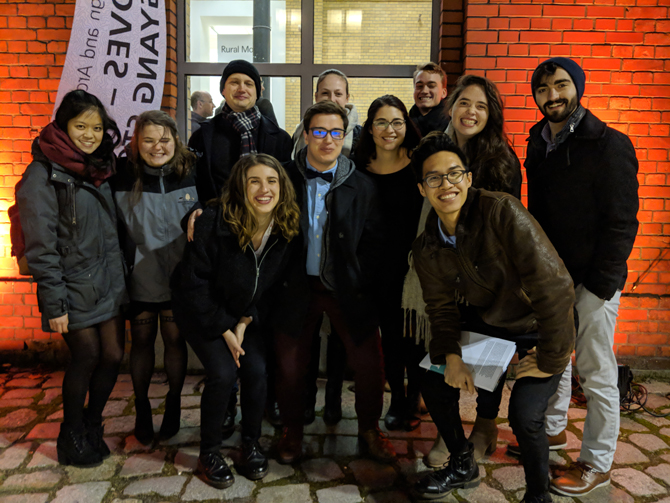Georgia Institute of Technology, Atlanta, Georgia USA, School of Architecture
5 February - 12 April 2018

“Germany is facing the biggest challenges since the reunification. Hundred thousands of people come to Germany escaping war and violence. Many of these will stay for a long term or permanently…We need residential space, we need to create possibilities for a successful integration, we need spaces of encounter...” (Dr. Barbara Hendricks / Federal Minister for the Environment, Nature Conservation and Nuclear Safety.)
The Georgia Tech Undergraduate International Design Studio immerses undergraduate architecture students in the lived experience of contemporary architecture, landscapes, and urbanism through extended residence in Berlin or Barcelona in order to provide a rich learning experience that fosters awareness and appreciation of cross-cultural approaches to architecture, urbanism, and design. It also involves introducing students to the morphology of cities and buildings, together with the complex array of forces – society, politics, ideology, identity, and conflicts. Our emphasis for the 2018 Berlin studio is refugee housing, or Berlin as Arrival City.
The studio investigated new ideas and questions about migration, housing and cities:
- How can we immersive ourselves into 250sqf of living space?
- Could we imagine to successfully transform temporary housing solution into permanent, sustainable housing structures?
- Could housing solutions adapt to the status of immigration?
- Could we merge temporary housing with other functions – such as student housing, cultural centers, sport facilities, education facilities, start-ups…?
- What are new sustainable typologies that can respond to this challenge?
- How can we imagine urban forms of integration where refugee housing is inserted into inner city “Bauluecken” (vacant lots) to create positive correlations between city, people and cultures? What are the methods for generating density: re-purpose, infill, adding on…?
- How can we provoke new conceptions of private and public space in which cultures overlap?
- What are the new tectonics, techniques of prefabrication and materials prompted by this scenario with an emphasis on quick construction?
- How could such a project materialize physically and economically?
- How can we use technology – such as virtual reality or augmented reality - to visualize these new sustainable prototypes within the city?
Program Director: Prof. Mark Cottle
Studio Instructors: Profs: Daniel Baerlecken, Michael Gamble
Building Innovations Seminar: Profs: Daniel Baerlecken, Michael Gamble
Berlin City Literacy Seminar: Marius Müller
Shape Grammars Seminar: Prof: Dr.Thanos Economou

